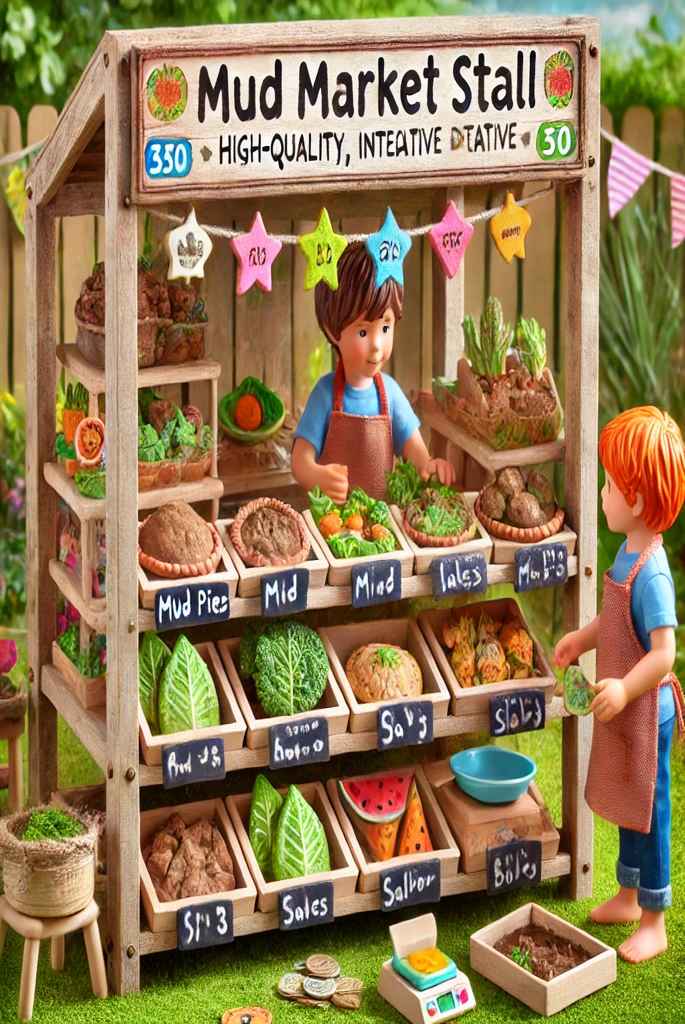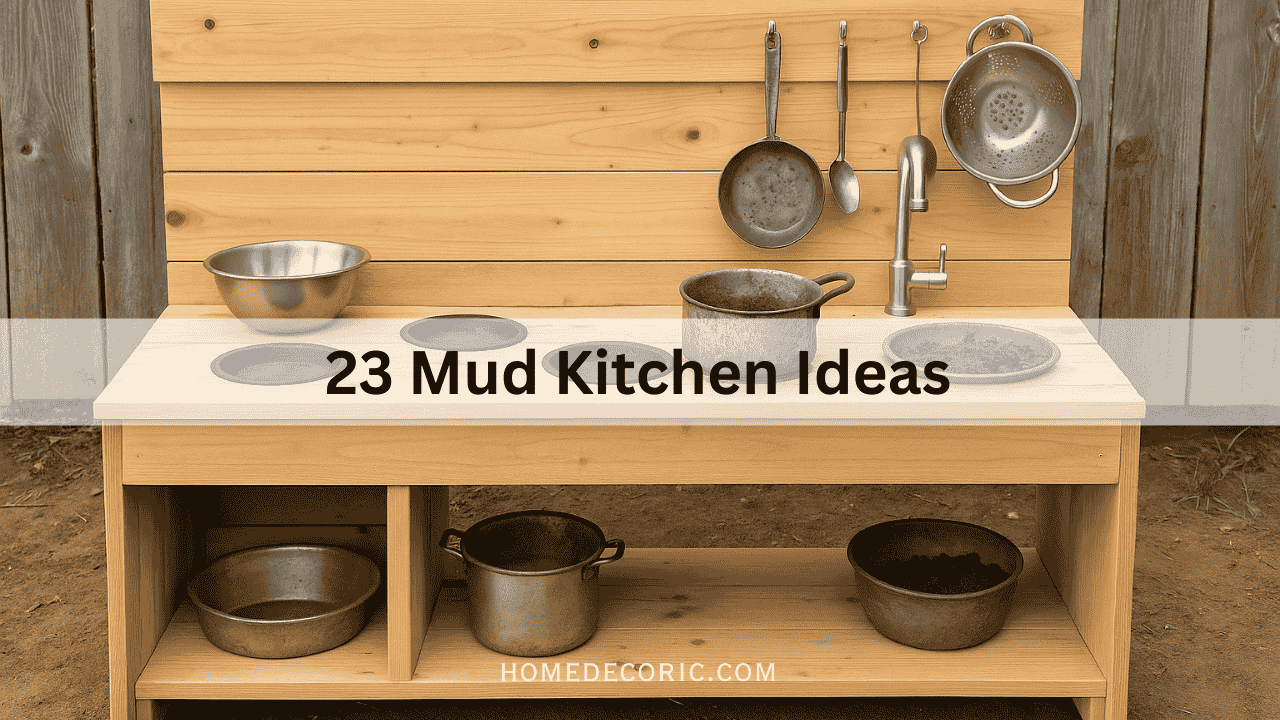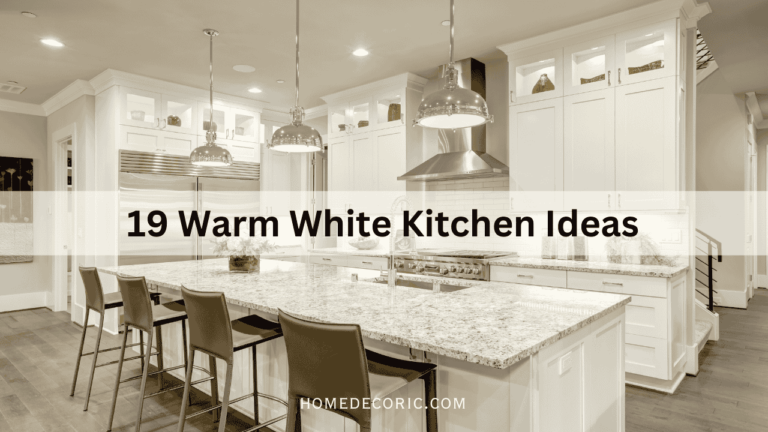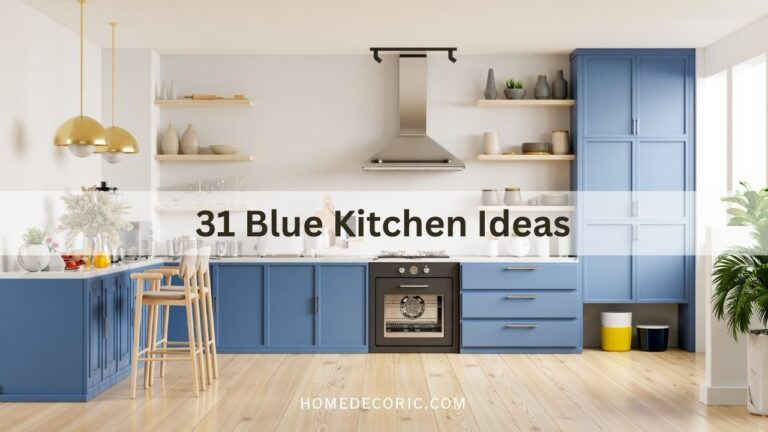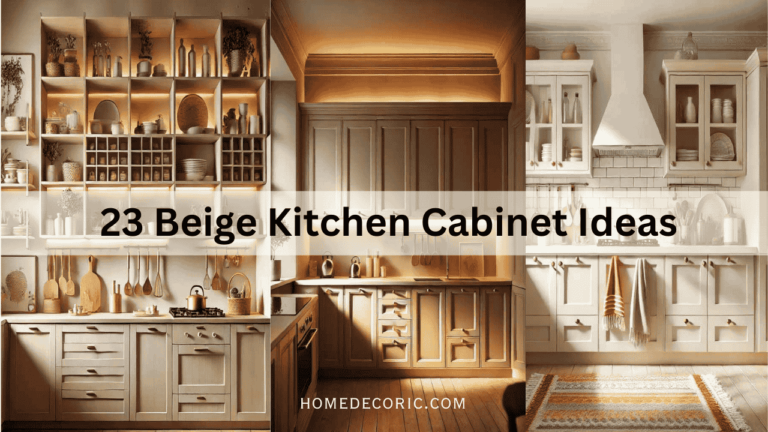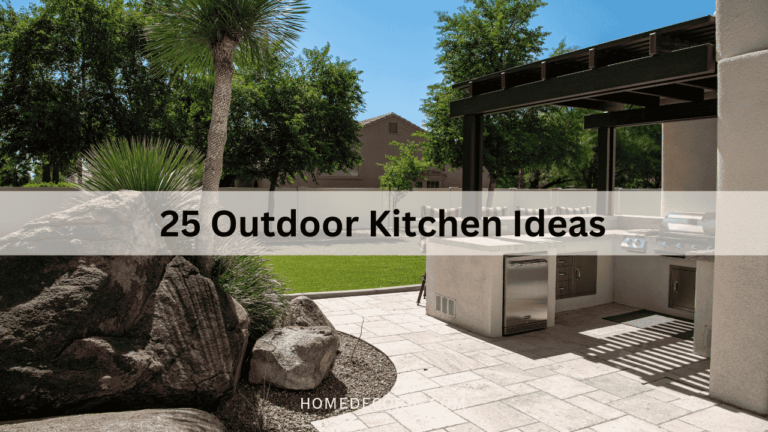23 Creative Mud Kitchen Ideas That Spark Outdoor Fun for Kids
Looking to create the ultimate outdoor play space for your little ones? A mud kitchen isn’t just a backyard toy. It’s a world of imagination, messy science, and Montessori-style learning. From rustic builds to portable setups, these 23 mud kitchen ideas will help you design a magical space where kids can mix, pour, and play to their heart’s content.
1. Rustic Pallet Mud Kitchen
Transform old wooden pallets into a beautiful rustic mud kitchen. This eco-friendly option blends naturally with your garden space and is inexpensive to build. Add shelves for pots and pans and even some hanging hooks for utensils. Kids will love the cozy, camp-style vibe while developing their motor skills. It’s perfect for families who enjoy upcycling and DIY weekend projects.
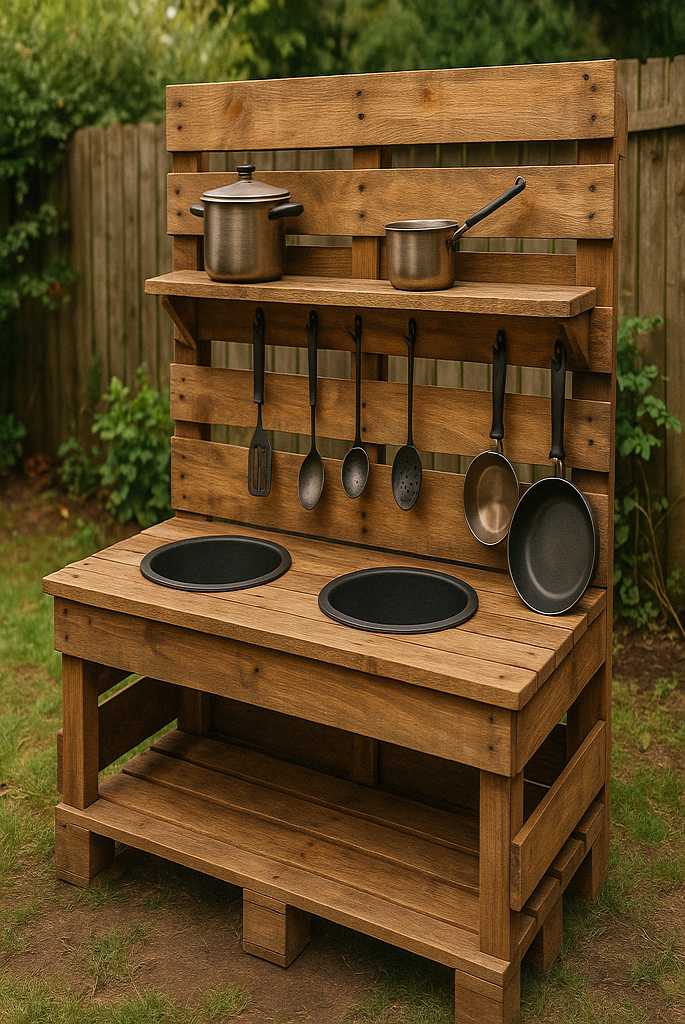
2. Portable Mud Kitchen on Wheels
Build a mud kitchen on caster wheels to make outdoor play mobile. You can easily move it into shade or store it indoors when it rains, which is especially helpful for small patios or shared yards. Add lockable wheels to keep it secure during playtime. Flexibility and convenience make this one a game-changer.
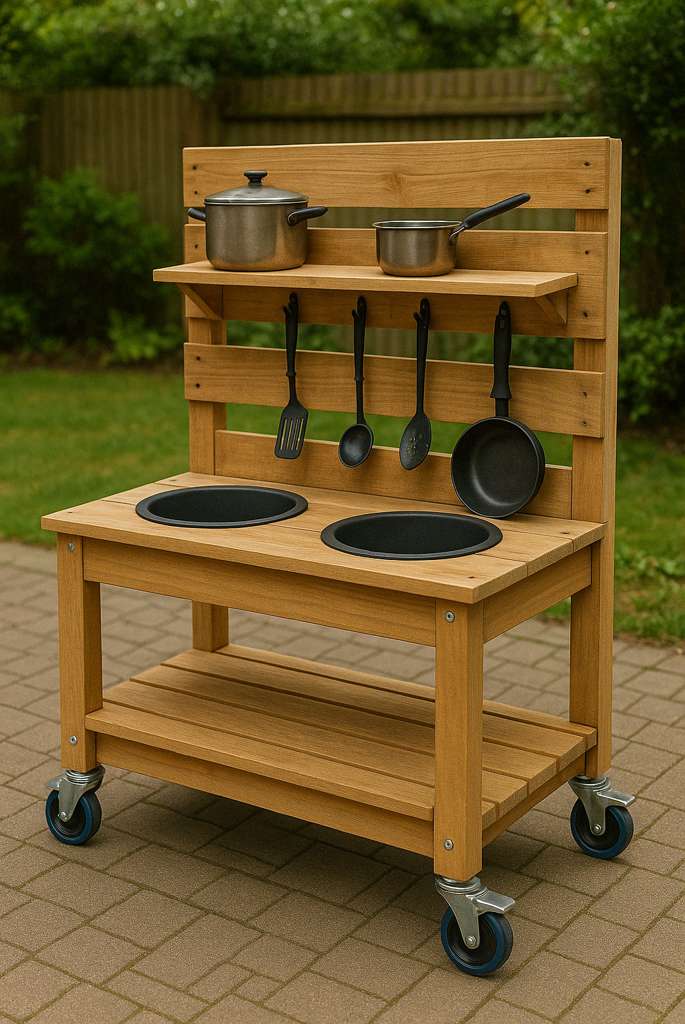
3. Mini Chef Station for Toddlers
Design a toddler-safe mud kitchen with lower counters, chunky tools, and no sharp corners. Ideal for ages 1-3, this setup encourages early sensory play. Use plastic bowls, large spoons, and bright colors to engage young minds. It supports Montessori-style independence and self-directed learning. Safety meets creativity in this scaled-down design.
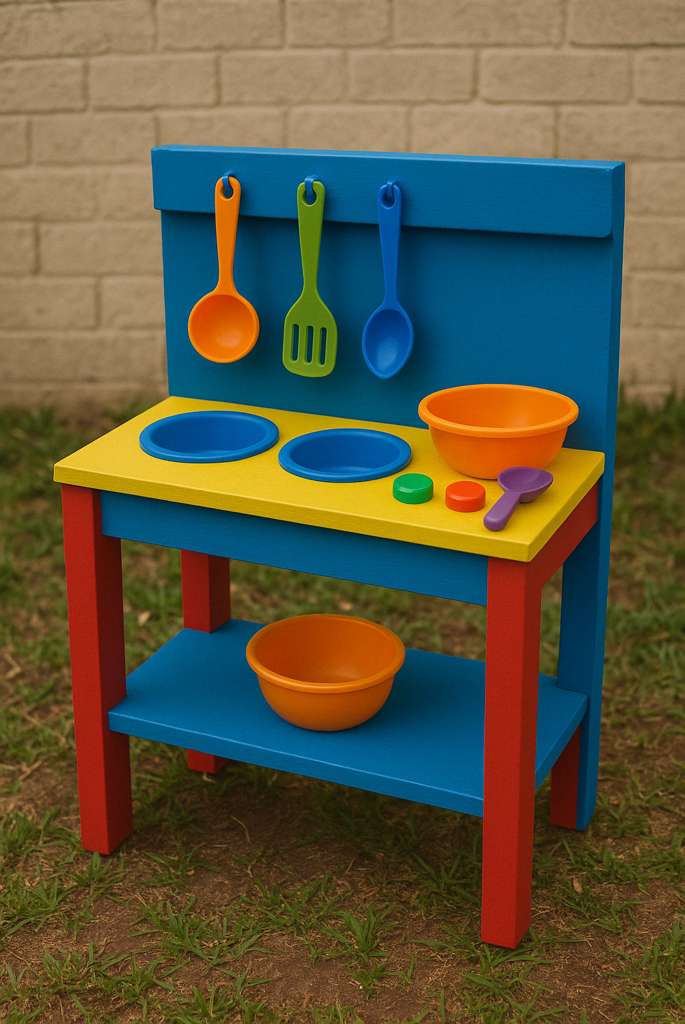
4. Built-in Water Pump Station
Integrate a manual water pump or garden hose for real water action. Kids can explore cause and effect while learning basic science concepts. It adds a whole new layer of interactive play. The running water keeps the mud fresh and the fun flowing. Plus, it teaches children about water usage and control.
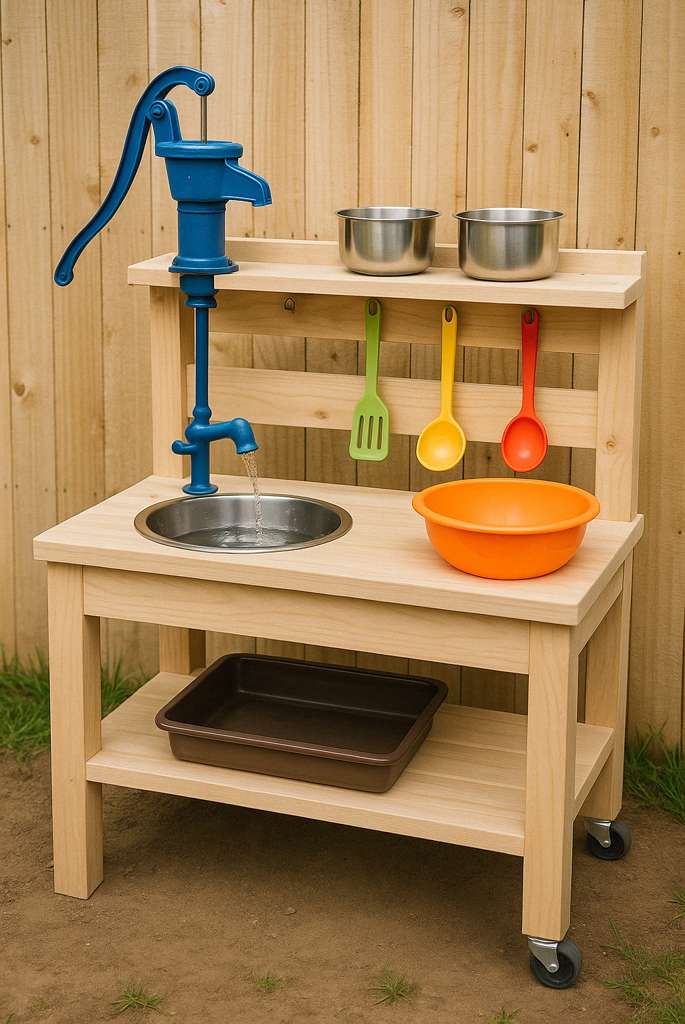
5. Nature-themed kitchen with Leaf Decor
Add bark, twigs, leaves, and stone textures to your mud kitchen for a forest feel. Paint leaf patterns or glue on pressed leaves for decoration. This design connects kids with nature while fueling their imagination. It’s an excellent setting for fairy tea parties or forest chef roleplay. Nature lovers will feel right at home.
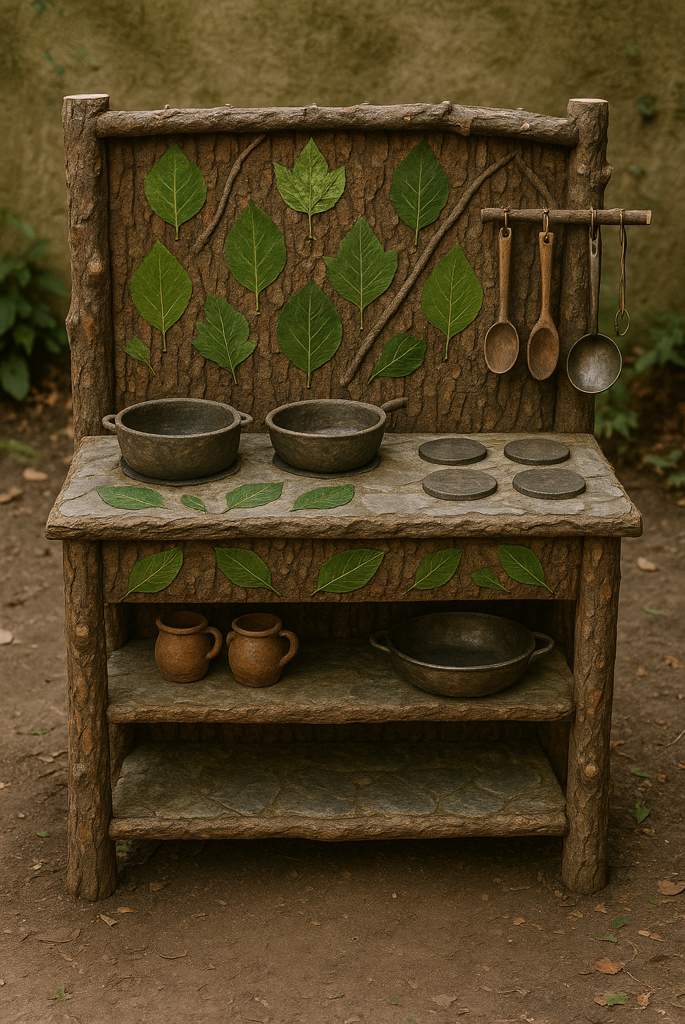
6. Sand & Mud Combo Kitchen
Combine sand and mud stations for dual sensory fun. Use separate bins or trays to keep textures distinct. Children can experiment with consistency, making sand pies or muddy cakes. This boosts sensory processing and open-ended creativity. It’s a tactile treat that keeps kids engaged for hours.
See more: 19 Warm White Kitchen Ideas

7. Mud Kitchen with Blackboard Menu
Mount a chalkboard above the kitchen for kids to write pretend menus. This adds a literacy boost while supporting roleplay. Kids love taking “orders” and serving mud muffins or sand soup. The board can be updated daily, just like an authentic café. It turns a basic mud kitchen into a storytelling hub.

8. Twin Sink Mud Kitchen for Sibling Play
Install two basins side-by-side to reduce squabbles and promote cooperation. Perfect for siblings or playdates, this layout encourages shared play. Each child can mix their creations simultaneously. Add labeled stations to teach turn-taking and organization. It’s social learning disguised as messy fun.

9. Hob-Style Burner Design
Paint circular burners on the countertop and glue on knobs for realism. These pretend stovetops stimulate imaginative cooking scenarios. Kids will pretend to simmer mud stew or boil leaf pasta. It’s a tiny detail that brings big engagement. You can even label the burners for a playful learning touch.
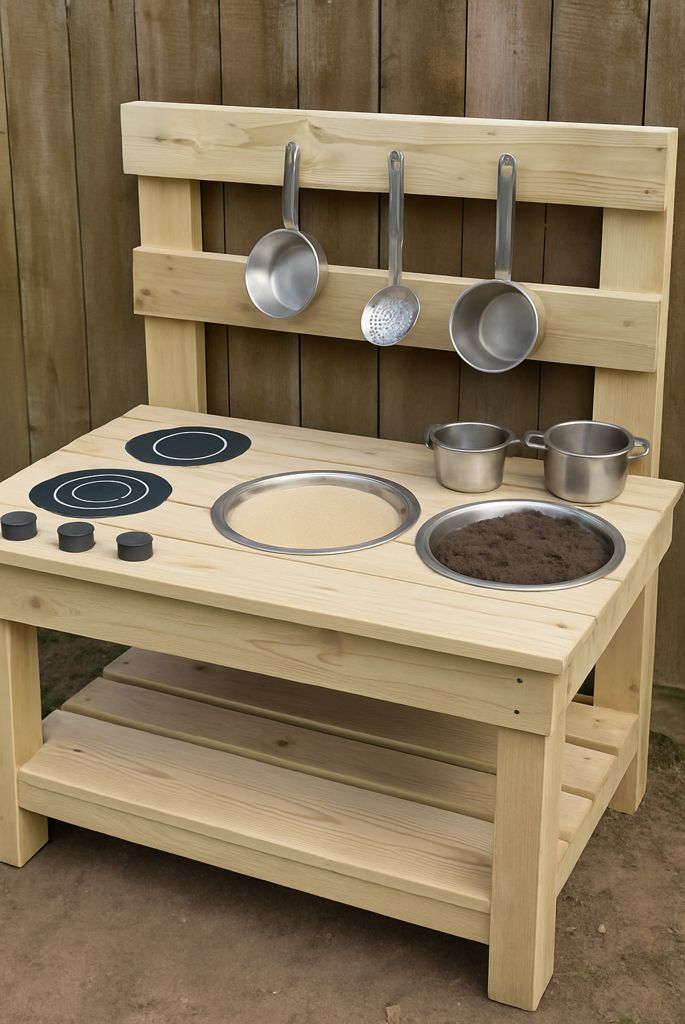
10. Recycled Sink and Tap Setup
For a touch of authenticity, use an old metal sink and a real tap fixture. Mount them on a wooden counter and connect them to a rain barrel or hose. The realistic setup increases immersion in play. It also introduces basic plumbing and environmental learning, a great way to blend fun with eco-conscious design.
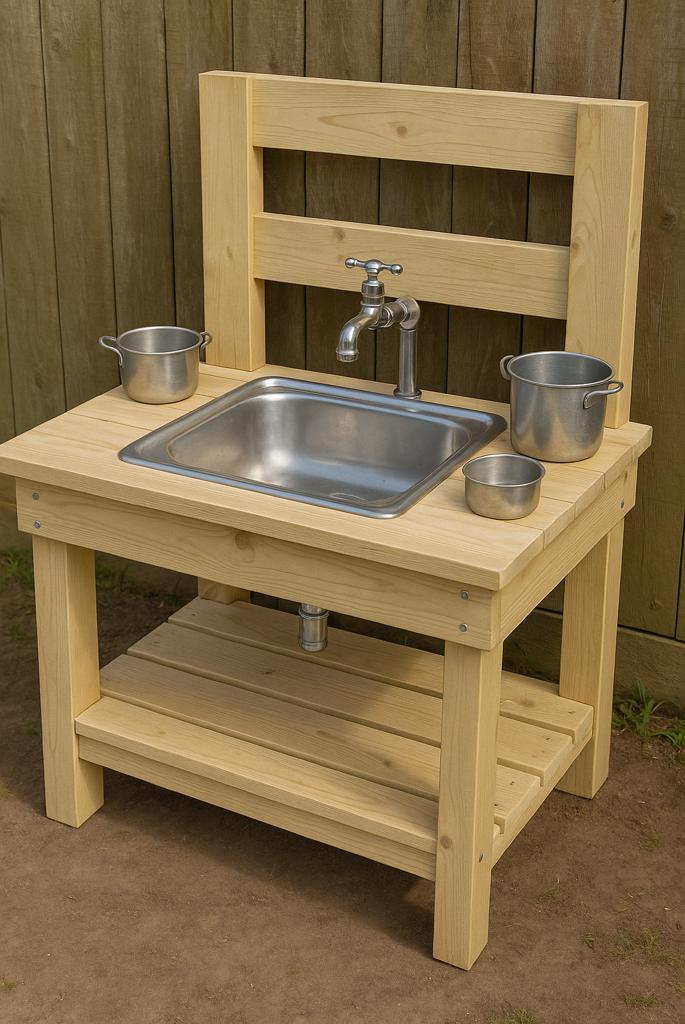
11. Camouflage Camp Kitchen
Paint the kitchen green, brown, or camo and add military-style mess kits. Kids can play “camp cook” or go on survival adventures. This theme is entertaining for outdoor explorers. It encourages imaginative storytelling and teamwork and is excellent for backyard camping weekends.

12. Fairy Garden Mud Cafe
Decorate with pastel colors, fairy lights, and tiny chairs for a magical vibe. Add miniature tea sets and flower petals for pretend fairy feasts. This theme nurtures storytelling and social play. It’s perfect for young dreamers who love whimsy and fantasy. The visual appeal makes it Instagram-worthy, too.

13. Convertible Bench and Kitchen Combo
Design a foldable mud kitchen that turns into a garden bench when closed. This dual-purpose unit saves space and is great for small yards. Use hinges and secure latches for easy conversion. It keeps your garden tidy while still offering playtime fun. A sleek, smart solution for minimalist outdoor living.
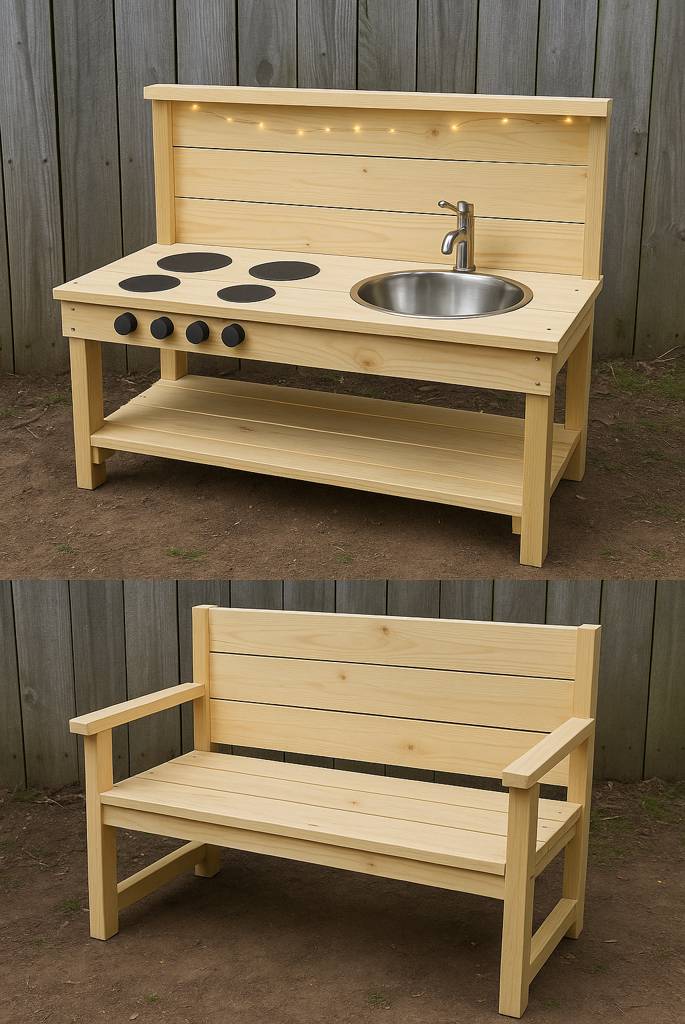
14. PVC Pipe Potion Lab
Add a network of PVC pipes and funnels for mixing watery potions. Kids will love pouring liquids and watching them flow through the system. This setup introduces STEM concepts like gravity and flow. Customize with color-coded liquids or natural dyes. It’s hands-on learning through magical play.
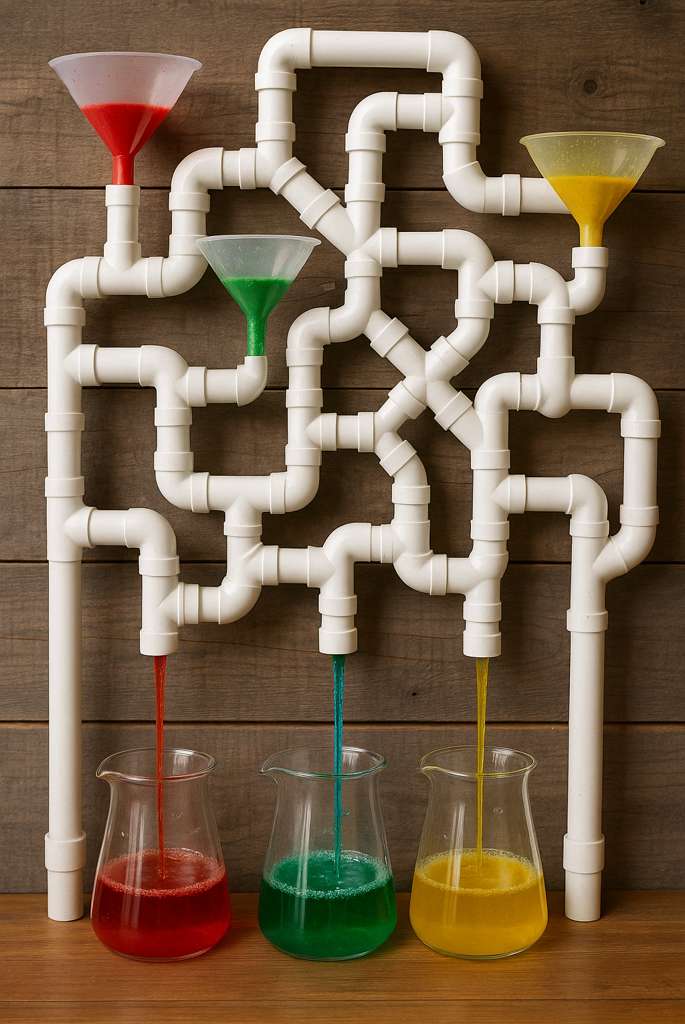
15. Rain Barrel Water Source
Connect a rain barrel to your kitchen for sustainable water use. Kids learn about conservation while enjoying constant water access. It’s an eco-friendly twist that supports STEM learning. Label the barrel to teach about rain cycles and nature. Every play session becomes a mini science lesson.

16. Upcycled Furniture Kitchen
Convert old dressers or nightstands into custom mud kitchens. Add a coat of outdoor paint and cut holes for basins. This gives new life to old furniture while saving money. The drawers make great built-in storage for utensils and supplies. A vintage vibe with modern functionality.
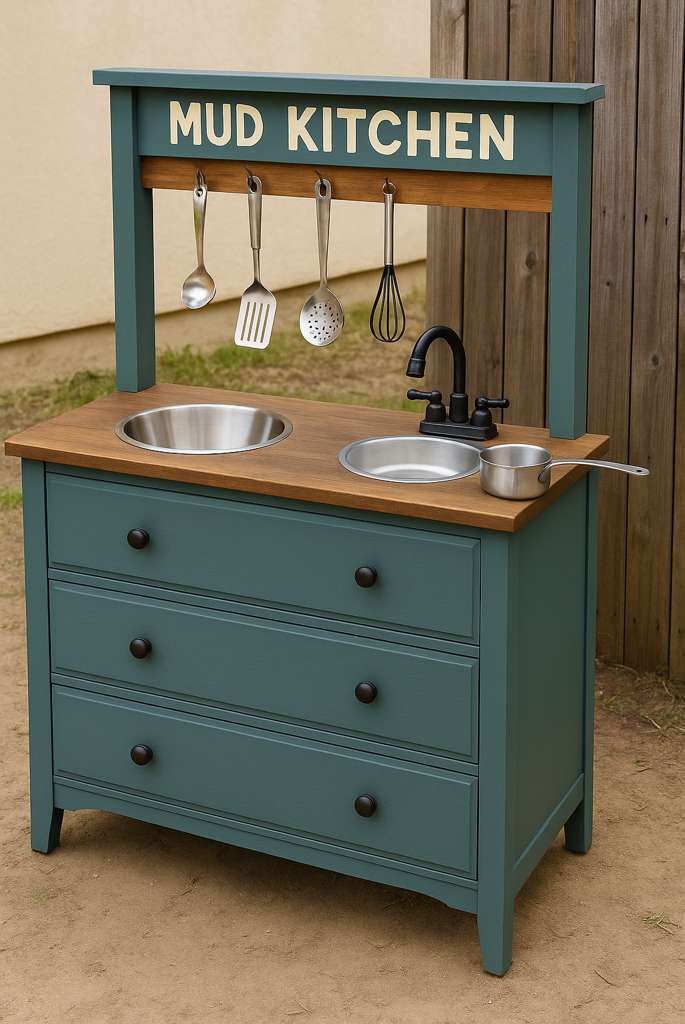
17. Seasonal Sensory Station
Rotate play materials based on the season: autumn leaves, spring petals, or snowy slush. This keeps the mud kitchen experience fresh year-round. Kids explore seasonal textures and smells. It also encourages observation of nature’s cycles, a nature-integrated play style that grows with your child.
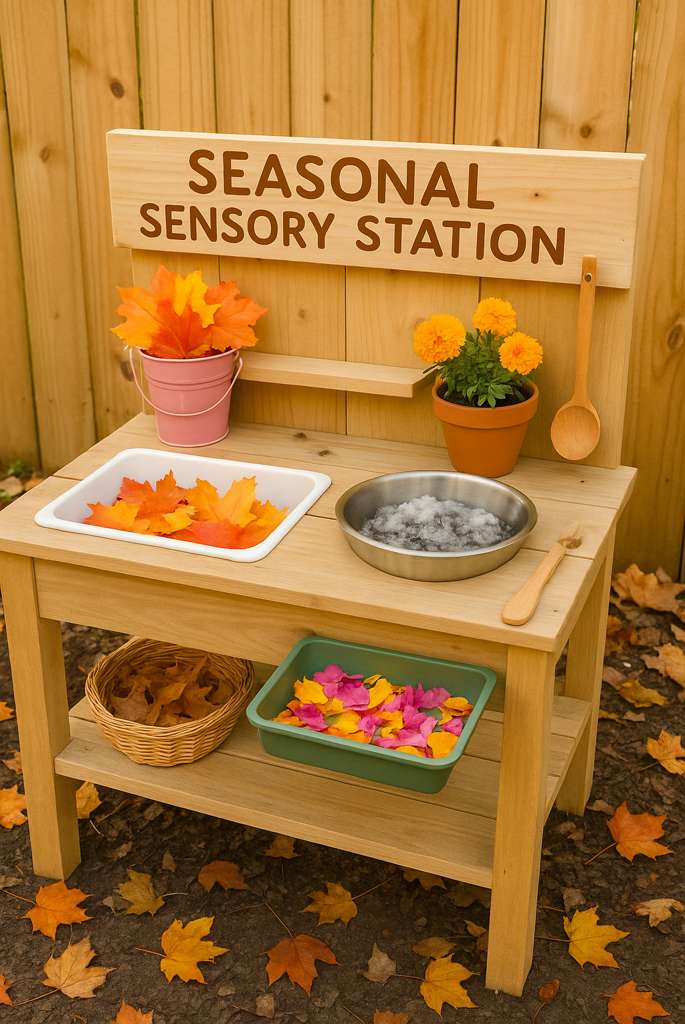
18. Mud Bakery with Real Baking Tins
Add muffin trays, pie tins, and cookie cutters for pretend baking fun. Kids can create mud cupcakes and decorate them with twigs and stones. It nurtures roleplay and fine motor skills. Label your station “Mud Bakery” to set the scene. It’s a messy, magical take on creative cooking.
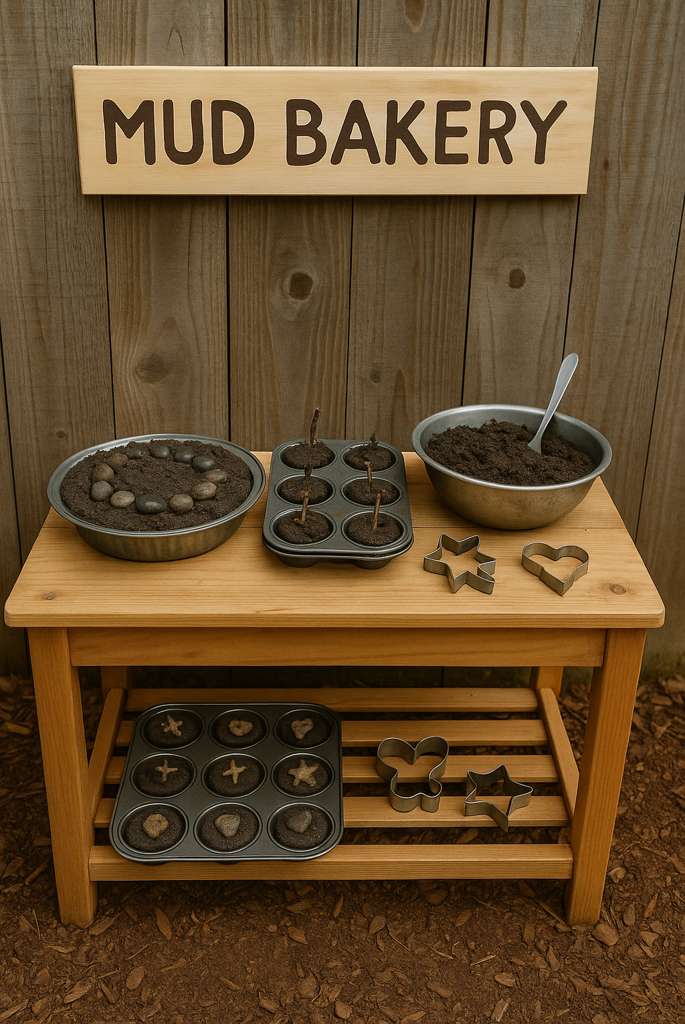
19. DIY Painted Stone Stove Knobs
Paint and glue smooth stones to mimic stove knobs or buttons. These add tactile interest and durability. Kids can twist them as they “adjust” the heat on their pretend meals. It’s a low-cost upgrade with high engagement. Bonus: it enhances hand strength and coordination.
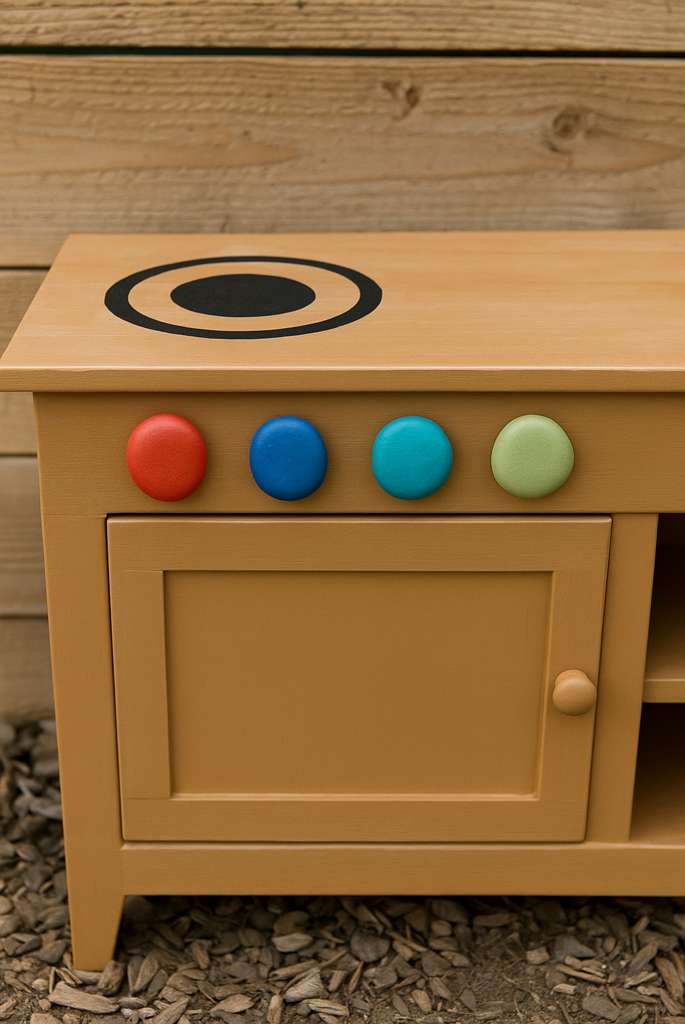
20. Mud Kitchen with Herb Garden
Attach small planters with herbs like mint, basil, or thyme. Kids can pick leaves and use them as ingredients in their muddy recipes. It’s a sensory boost with added educational value. You can even label each plant to support early reading. A beautiful blend of gardening and play.
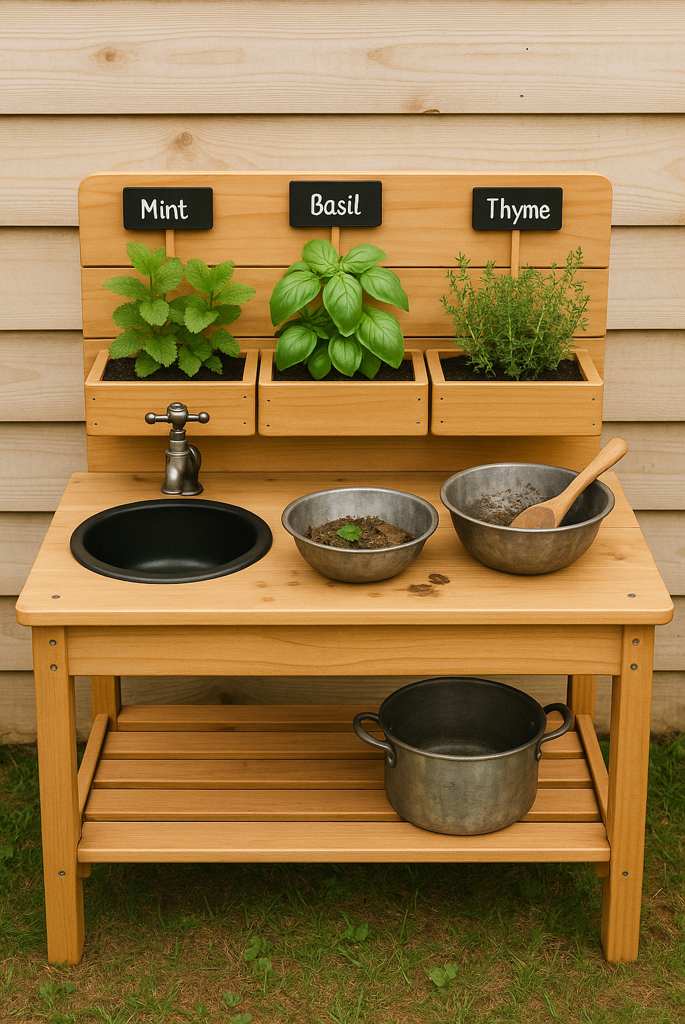
21. Wall-Mounted Compact Mud Kitchen
Ideal for small patios or balconies, this fold-out kitchen mounts to a wall or fence. It can be folded down during playtime and retracted when done. Small containers and shelves for tools can be added. This keeps things organized and accessible.
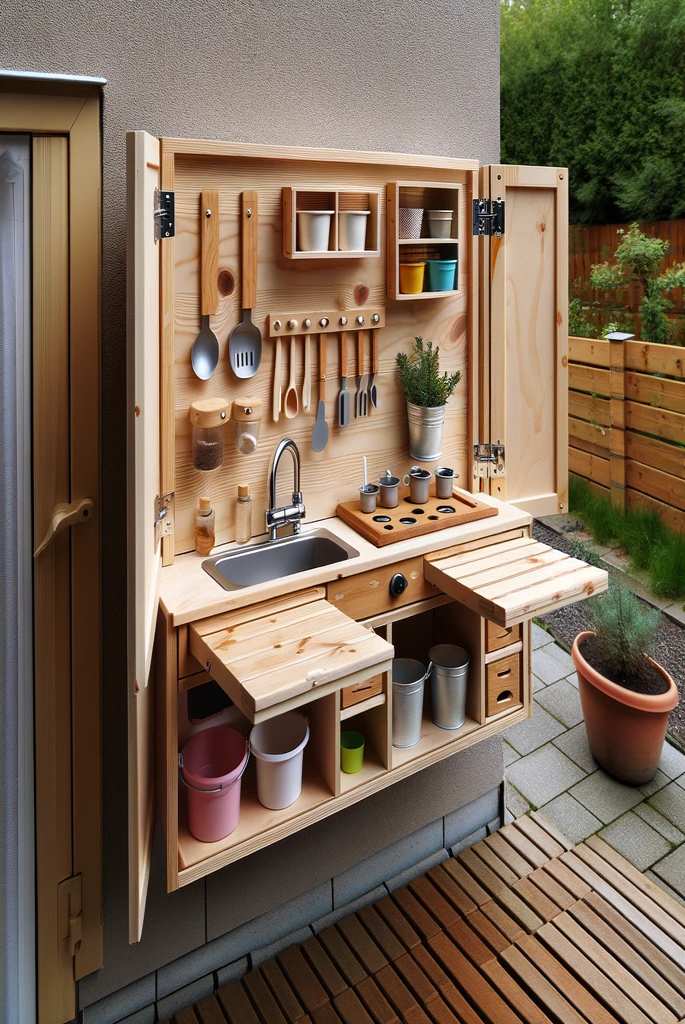
22. Sensory Bin Integration
Integrate plastic tubs filled with rice, beans, or water beads for alternative sensory play. Swap them out based on your child’s mood or theme. This adds versatility and keeps playtime exciting. The bins are easy to clean and store. A must-have feature for curious explorers.
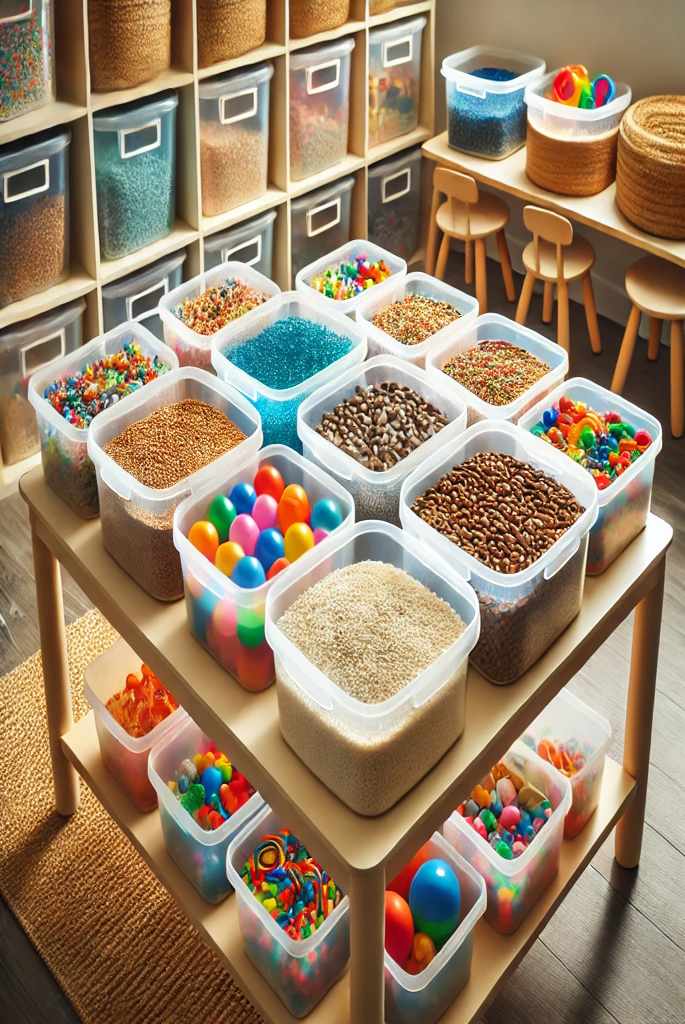
23. Interactive Mud Market Stall
Design a stall-style setup with shelves and signs for a mud market. Kids can pretend to sell mud pies or leaf salads to each other. This activity introduces the concepts of money, trade, and communication. Add play money or a scale for extra learning. Roleplay and creativity collide in this mini marketplace.
